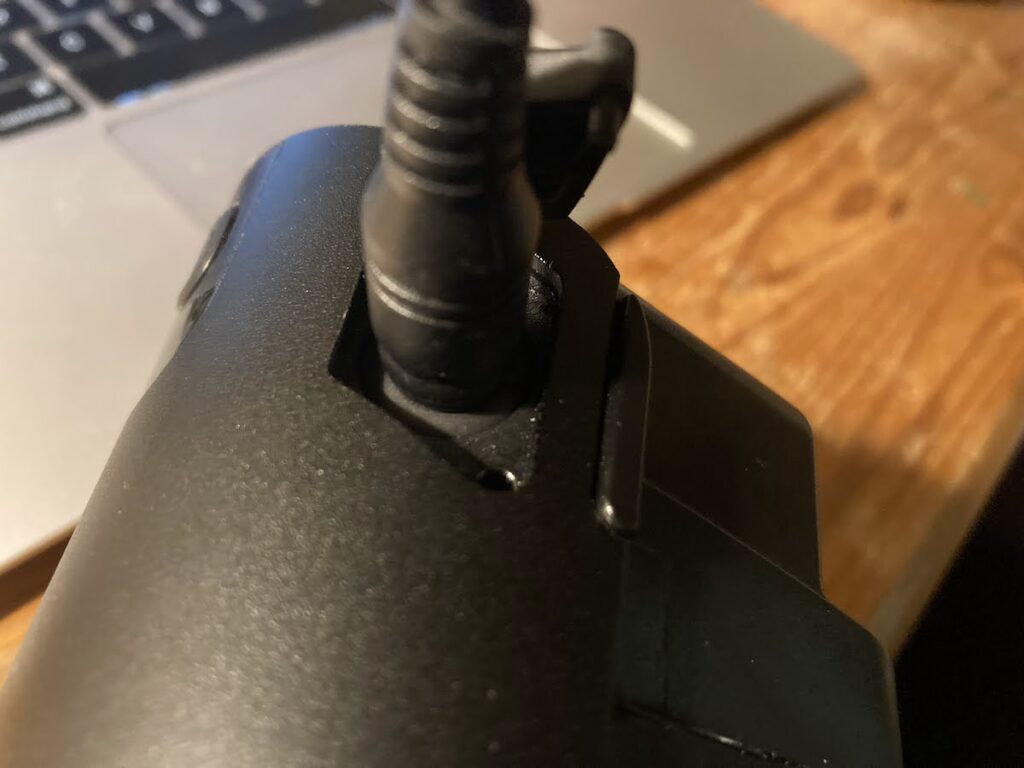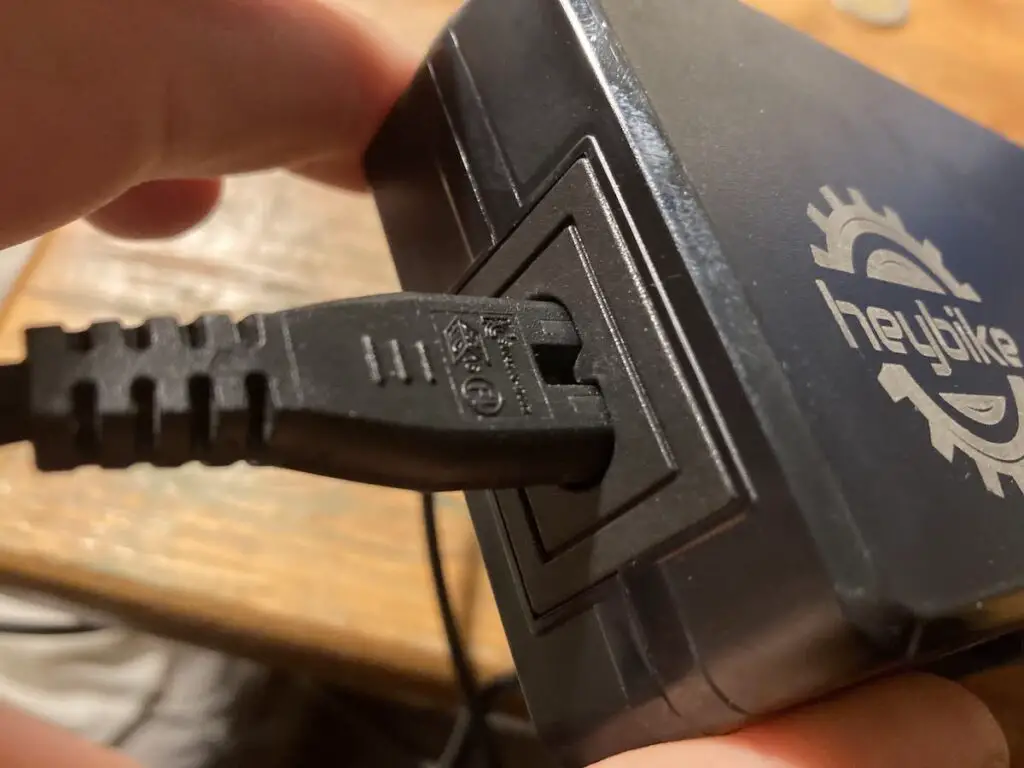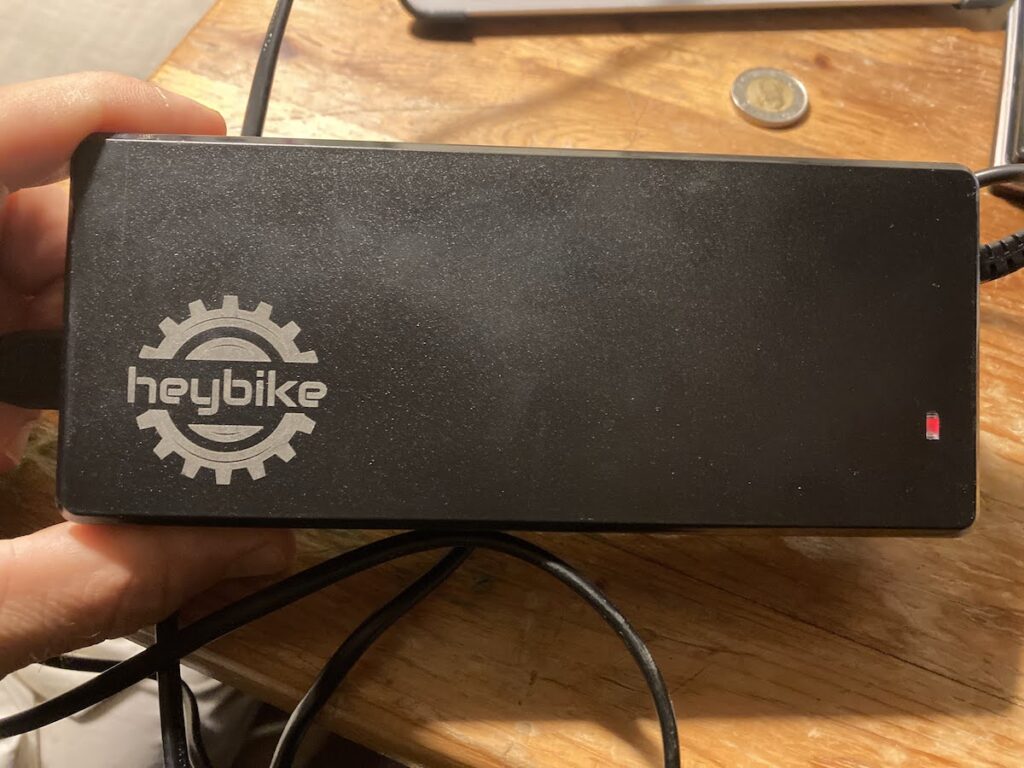E-bikes are still bikes without a working battery, but they’re heavy and clunky. If your battery isn’t charging, you’ll be forced to pedal a big bike on your own, pushing your weight, the weight of the motor, and the weight of the extra-thick frame and larger tires. Let’s take a look at how you can fix this issue!
If your e-bike battery isn’t charging, it can be due to a fault with the plug, a problem with the charger, a faulty charging port, or an issue with the battery itself. Many issues can be corrected, but some may require you to replace your charger or battery.
In this post, we will go into some of the more common issues affecting your battery’s ability to charge. In many cases, following a set of basic troubleshooting tasks can save you a lot of money and restore your battery to working order fast.
Possible Problem #1: Electricity From The Outlet
If you’ve got your bike plugged into an outlet that’s not supplying electricity, it won’t charge. Most modern battery chargers have LEDs in them that let you know that they’re plugged in properly, but it’s easy to forget to check these.
Electric bikes built for everything and priced for everyone. Shop Rad Power Bikes, America's #1 electric bike brand. Get out. Go further. Ride Rad.
Before you do anything else, take a few seconds and verify that your wall socket is delivering normal power. Does the charger’s light turn on when it’s plugged in? When you plug in a light, vacuum cleaner, or another electrical device, does it work normally? Is the outlet on a switch?
Also, check that the power cable is properly connected to the charger, as it can come loose at times during storage.
This issue seems basic, but you might be surprised how many technical issues are caused by simple human forgetfulness. I have definitely been guilty of this. It’s worth the time to verify that your outlet works with other devices before you move forward.
If your outlet is causing problems, switch to a different one and enjoy your working battery.




Possible Problem #2: Switches
Many batteries and some chargers have switches built into them that perform different things. In some cases, having one of these in the wrong position will stop your battery from charging.

The most common cause of this issue is that you’ve got a charger that was built for use in different countries. These chargers usually have a switch to toggle between US electricity and rest-of-the-world electricity. If this toggle is in the wrong mode, your charger won’t work correctly.
Be sure to take a moment to check that this is accurate before you move too far into your troubleshooting process.
Some batteries also have built-in switches. Consult the manual for your battery to determine if your battery should be on or off when it’s being charged. If it’s not working in one position, it’s probably worth plugging it in for a few seconds in the other position and seeing if your charger’s status flips to ‘charging.’
Finally, check any power strips or extension cords between the wall and your charger to ensure they are receiving electricity. Again, this seems like a very basic check, but it’s definitely one that will fix charging issues for a surprisingly large number of people.

Possible Problem #3: Bad Charging Port
Almost every e-bike has a battery that can be charged while plugged into the bike. This time-saving feature is great, but it also adds an additional point of failure. Sometimes, the wiring between your bike’s charging port and your battery develops an issue that prevents your battery from charging.
If your battery won’t charge, remove it from the bike and try charging it again. If it starts charging, there’s a good chance that your charging port is the cause of your trouble. Either charge the battery off the bike from now on or take your bike to a specialist shop and have them look at your charging port.
Possible Problem #4: Bad Charger
Chargers are relatively complicated bits of electronics that have internal sensors and logic gates that detect when your battery is fully charged, allowing them to shut off before they damage your battery. They also tend to get very hot when they’re in use, which can lead to problems.
Sometimes, your charger might think your battery is full, even if it’s almost out of power. In other cases, the internal wiring might be damaged in a way that prevents power from flowing to your battery.
If your charger turns out to be the issue, replacing it is your best bet. It’s almost never worth the effort to repair a charger instead of just buying a new one.
There are several ways to test your charger, but the simplest is to try your battery with a different charger. Try borrowing a charger from a friend, from a similar appliance (be sure to check the voltage), or take your battery and charger to a specialty shop and have them test these critical components.
If you can’t do this, you can use a multimeter to read the voltage from your charger. In general, having a number that’s a bit higher than the nominal voltage of your battery suggests that things are working correctly.
If you get a number that’s in the right ballpark but low, your battery isn’t currently charged, meaning that the issue you’re having might stem from another component. If you get a number that’s very close to zero, your battery has failed, either by being fully discharged or due to another issue.
If you get a number that doesn’t make any sense, take a moment to check what mode you have your multimeter on. There’s a perfect chance that it’s not voltage.
If your charger turns out to be the issue, replacing it is your best bet. It’s almost never worth the effort to repair a charger instead of buying a new one.
Possible Problem #5: Fully Discharged Battery
Lithium batteries are designed to hold a small amount of power at all times. Your battery will stop working if it runs down to zero power. The bad news is that it’s tough to get a battery working again after it hits this fully discharged state.
There are several resources on the internet that suggest that you can “jump-start” a fully discharged battery by briefly charging it with a high-voltage charger (like one for a bigger battery) or through the discharge port.
Before you blindly jump into this sort of thing, remember that lithium batteries can and will light on fire if they’re misused. Battery fires are hazardous and difficult to put out. Unfortunately, one of my friends experienced this firsthand and had his apartment burned down.
If you’re very confident that your battery is fully discharged (you drained the power and let it sit for a couple of weeks in the cold, for example), you have a voltmeter, a high voltage charger you can use already, and you’re sure that you know what you’re doing, it might be worth investigating these methods.
If there’s any doubt, however, you should err on the side of caution and leave this sort of thing to a professional.
Possible Problem #6: Failing Battery
Batteries are made up of banks of individual cells. These cells are managed by a small circuit board called a BMS or battery management system. In some cases, the BMS in your battery will cause unwanted behavior or prevent it from charging altogether.
The good news is that this is the BMS’ job. It’s usually doing what the manufacturer set it up to do. The individual cells in your battery will fail at different rates, and when one of them fails, the BMS will have to prevent power from going in and out of that failing cell.
If enough of your battery’s cells experience enough problems, the BMS will stop your battery from working altogether. This is precisely what it’s designed to do, as it keeps you and your bike safe.
If enough of your battery’s cells experience enough problems, the BMS will stop your battery from working. This is exactly what it’s designed to do, as it keeps you and your bike safe.
Your BMS isn’t perfect, however, and it’s not unheard of for these devices to fail even when the cells in your battery are totally fine. Your BMS might be malfunctioning in several ways as a result of damage from heat, faulty wiring, or an unfortunate short.
Batteries aren’t meant to be disassembled, especially by consumers. Even if you opened up your battery and tested the components with electrical equipment, replacing a component like a BMS or a bad cell is currently difficult and expensive. It’s not easy or cheap to get your hands on replacement parts.
On top of that, batteries are dangerous. Without the proper expertise and training, it’s all too easy to start an electrical fire that’s dangerous and difficult to put out. Because of that, it’s best to simply replace a failing battery or give it to a professional to fix rather than trying to fix it yourself.
Most professionals suggest buying a new battery instead of trying to repair things at all. If your battery isn’t charging and you’ve tested the charger and the charging port, the battery is probably the issue.
If your battery was stored at a fairly high power level and you don’t think you fully drained it, it’s likely that a cell or the BMS is the issue. This means you should probably look at replacing your battery.
Conclusion
In summary, if your battery isn’t charging properly, it can be worth trying some troubleshooting before replacing it. Sometimes, it can be an issue with the power outlet or the charger rather than the battery, but there are times when, unfortunately, it is the battery, in which case you may have to replace it.
